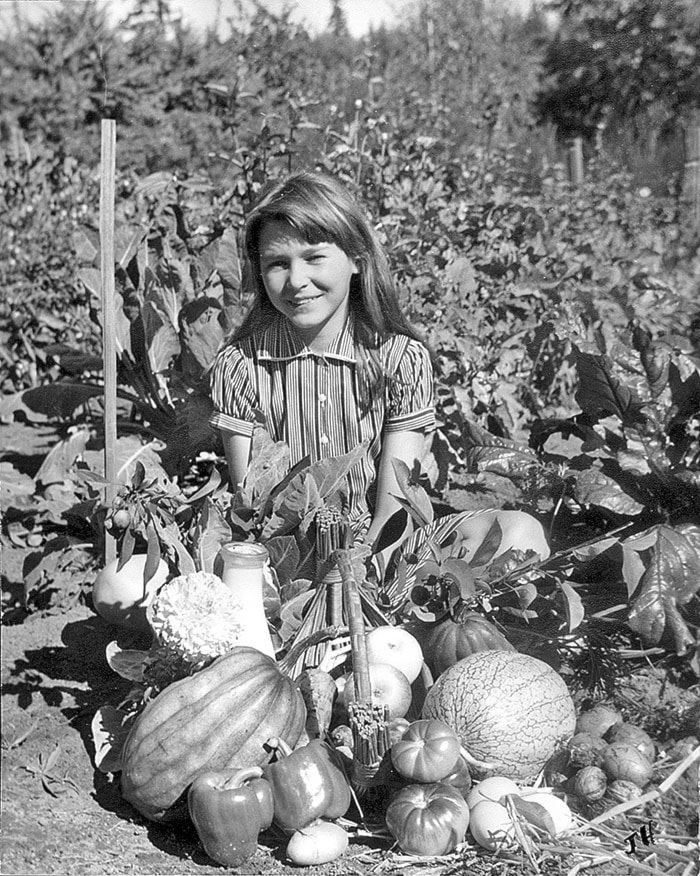Sandra Parrish
Museum at Campbell River
“It’s a wonderful place to work. It’s nice working outside with the river right there, you can hear the birds and see the flowers come out,” Marcy Prior explains. It is clear that she still enjoys working in the gardens at the Haig-Brown Heritage House.
In May 1986 Marcy already had full-time work when she learned that Mrs. Haig-Brown was looking for a new gardener. Reluctant to take on another job, even one that was only a day a week, her partner Jeff urged her enthusiastically “you should take it”. Thankfully she did take the job, and now the gardens at the House have been under Marcy’s care for 30 years.
Aside from the setting, part of what appeals to Marcy about the gardens are that “It’s an established old garden. There aren’t many of those in Campbell River”. In 1936 when noted author, conservationist and fly fisherman, Roderick Haig-Brown and his wife Ann purchased the property, the beginnings of the garden were already in place. “He (Roderick) was the gardener,” notes Marcy, “He was the one who wanted the perennial bed and he planned it out. Ann was busy raising the kids and running the household and for Rod the garden was his passion. He was the one who planted all the Birch trees and the Beeches, he wanted a little bit of England.”
According to Roderick in Measure of the Year “Sometime during the war years Ann took over the vegetable garden and she has run it ever since, to the great good of the household, while I attend the frivolous flowers and trees”. After Roderick passed away in 1976, Ann was left with caring for both vegetable and flower gardens, which she did with the help of a succession of gardeners.
Marcy’s work day started with her and Ann sitting together for a few minutes. Ann would go over what needed to be done for the day ending the conversation with “That’s enough!” which was Marcy’s signal to get started. This routine continued almost up to Ann’s death in 1990. Marcy not only enjoyed the work but quickly found that “It was really good for me because Ann knew a lot about gardening. She really mentored me.” At this time Marcy was working towards her diploma in horticulture through the University of Guelph and that combination of book learning and Ann’s practical experience served her well.
When Marcy started, the out-going gardener pointed out plants that needed to be moved or taken out. Marcy assumed the changes had been discussed with Ann but was surprised to find that wasn’t the case. “When I started working I mentioned them to Ann and she wrung her hands and said “but I like them,” I responded “Well, it’s your garden.” I just thought they had talked about it. Once she knew that I wasn’t going to tell her how to organize her garden and what to do she was pleased with that.” This attitude is what makes Marcy the quintessential gardener for a heritage site. Unlike the house, where it is relatively easy to maintain furnishings and décor to a specific time period, a garden is never static, but a living thing. Under Marcy’s care all the elements of the garden established by the Haig-Brown’s remain, with perhaps one exception.
“It is still very much Ann’s garden. But,” Marcy admits “the pots on the terrace have a mixture in them and she didn’t like that. It had to be all white Pansy’s or white Lobelia in one pot. I’ve changed that.”
It has been several years since Ann passed, however Marcy can still feel her presence as she works in the garden. “If something has happened that I think that she would disapprove of, I go down the daffodil walk and say “sorry”.
I suspect that there is little that Marcy truly needs to make amends for as it is due to her efforts that the Haig-Brown gardens continue to flourish for all to enjoy.
